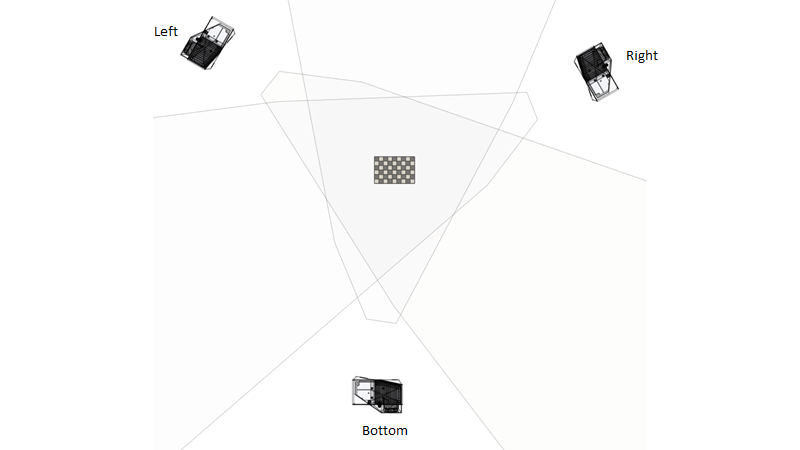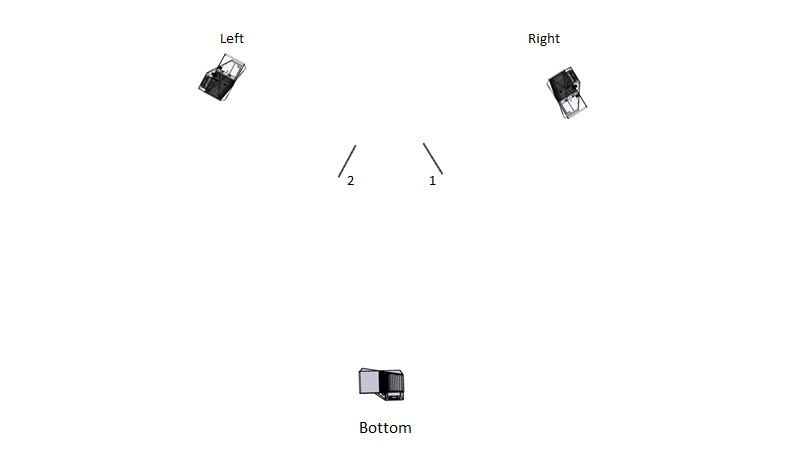Multi-step calibration¶
The fastest calibration takes place if all cameras calibrate against one primary camera. In other words, all cameras have the calibration object in view simultaneously. However, with multiple cameras, multiple calibration steps might be required.
By multiple steps, we mean that the calibration plate must be re-positioned to be in view of all cameras. Consider the following case, with three cameras spread in a circle at 120 degrees angle from each other.

The goal is to find a transformation matrix from the Left camera to Bottom, and from Right camera to Bottom. Thus we have two calibration setups, as shown below.

The superimposed setup is shown next, viewed from above to properly visualize the angles.

In this case, we can run multi-step calibration without loss in performance. That is because, in each step, one transformation matrix is generated. Each transformation matrix transform into the coordinate frame of the Bottom camera.
The first step involves Left and Bottom camera and calibration object 1.
The second step involves Right and Bottom camera and calibration object 2.